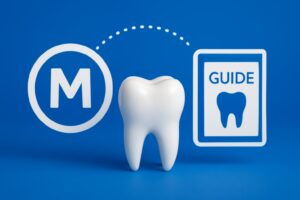Dental technology is evolving at lightning speed, and the 3shape dental scanner is at the forefront of this transformation. As digital workflows become essential for clinical excellence, dental professionals must stay ahead to meet rising patient expectations and boost practice efficiency.
This expert guide unpacks everything you need to know about the 3shape dental scanner in 2025. You’ll discover the latest models, standout features, seamless workflow integration tips, key buying considerations, and emerging trends that will shape your success.
Ready to enhance accuracy, speed, patient experience, and ROI? Let’s dive in and empower your next investment with trusted insights.
Understanding 3Shape Dental Scanners: Technology and Evolution
Dental professionals are witnessing a rapid transformation in digital dentistry, and the 3shape dental scanner is at the forefront of this evolution. Understanding what makes these scanners unique, how they've advanced over time, and their diverse applications can help you stay ahead in 2025.
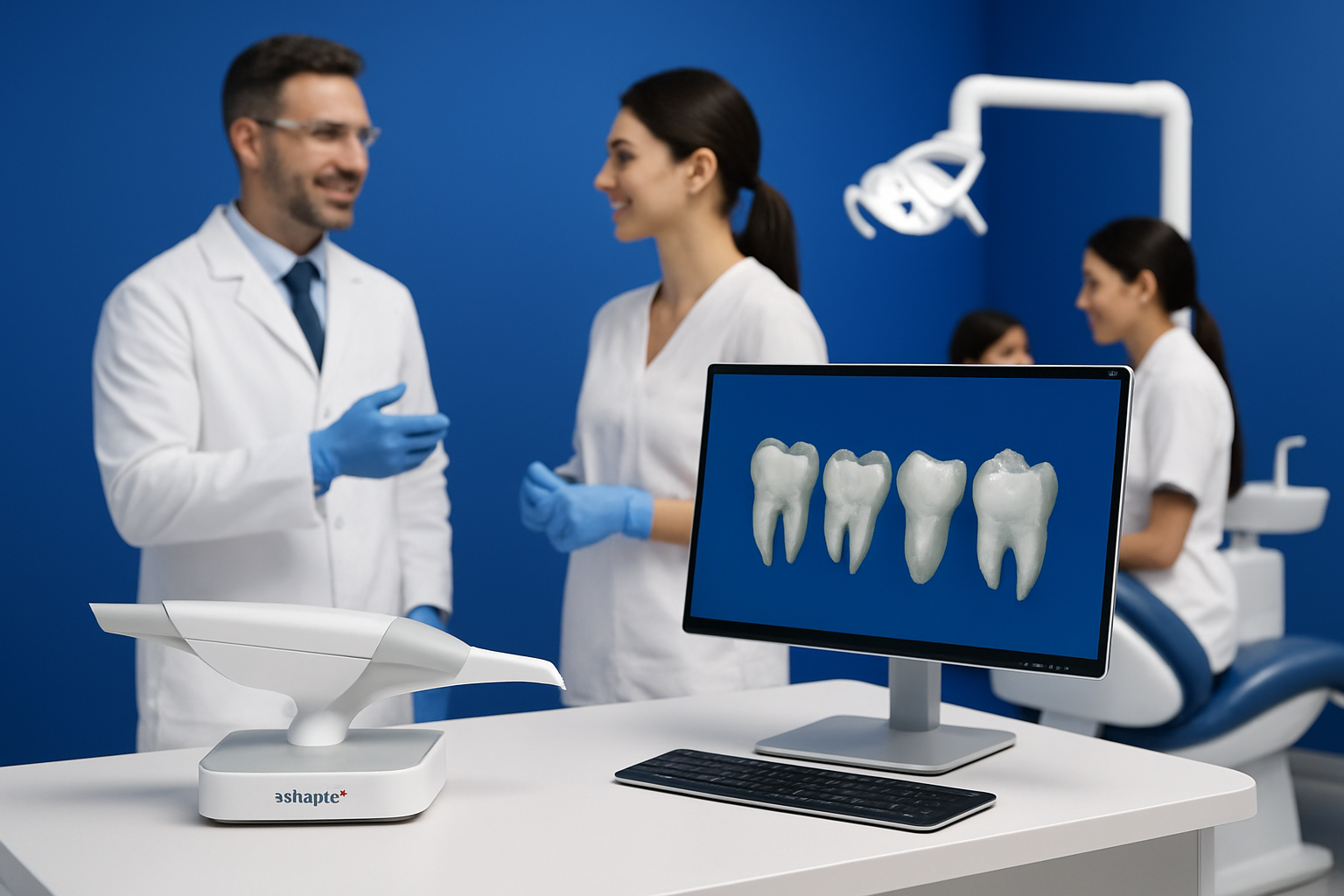
What Sets 3Shape Scanners Apart?
The 3shape dental scanner stands out due to its proprietary scanning technology and advanced imaging algorithms. These tools capture high-precision color and 3D data, ensuring even subtle details are recorded accurately.
One of the biggest advantages is its open architecture, allowing seamless integration with a wide range of CAD/CAM systems. Dental practices benefit from continuous software updates, including AI-driven enhancements that make scanning smarter and more reliable.
User-friendly design is another hallmark. Whether chairside or in the lab, 3Shape scanners are built for intuitive operation. The TRIOS series, for example, is renowned for its accuracy and ease of use, making it a favorite among clinicians and dental technicians alike.
Key Milestones in 3Shape Scanner Development
Tracing the journey of the 3shape dental scanner reveals a pattern of relentless innovation. Major product releases like the TRIOS 3, TRIOS 4, and TRIOS 5 marked significant leaps in performance and versatility.
The introduction of wireless and portable models made scanning more flexible and accessible for busy practices. With each generation, scan speed improved, and real-time feedback became more robust, empowering clinicians to achieve reliable results faster.
3Shape expanded its reach into orthodontics, implantology, and restorative workflows, supporting a wide variety of clinical needs. Today, global adoption rates of the 3shape dental scanner continue to rise as more practices embrace digital workflows. For a deeper dive into the company's transformative journey, see 3Shape's 25-Year Milestone and Digital Dentistry Innovations.
Types of 3Shape Scanners and Their Applications
There are several types of 3shape dental scanner models, each tailored for specific clinical and laboratory needs. Intraoral scanners are ideal for restorative, orthodontic, and implant cases, offering fast, accurate chairside impressions. Desktop and lab scanners excel at model digitization, prosthetic design, and streamlining lab workflows.
Let’s compare some key models and their strengths:
| Scanner Type | Best For | Notable Feature |
|---|---|---|
| TRIOS 5 | Ultra-fast scans, chairside use | Portability, battery life |
| TRIOS 4 | Restorative, implants | Wireless option |
| Lab Scanners | Model digitization, design | High throughput |
Chairside scanning with a 3shape dental scanner delivers immediate feedback and faster turnaround for crowns, bridges, and aligners. In contrast, lab scanning is perfect for detailed prosthetic work and handling multiple cases simultaneously.
Integration is another key advantage. The 3shape dental scanner works seamlessly with 3D printing and milling devices, opening the door to same-day dentistry and custom solutions. This flexibility supports both solo practitioners and large labs looking to enhance efficiency and expand their service offerings.
Core Features and Benefits for Dental Practices in 2025
The 3shape dental scanner is redefining digital dentistry for 2025. Practices adopting this advanced technology gain a competitive edge in precision, speed, and patient care. Let’s break down the core features and benefits that make the 3shape dental scanner a smart investment for modern dental clinics.
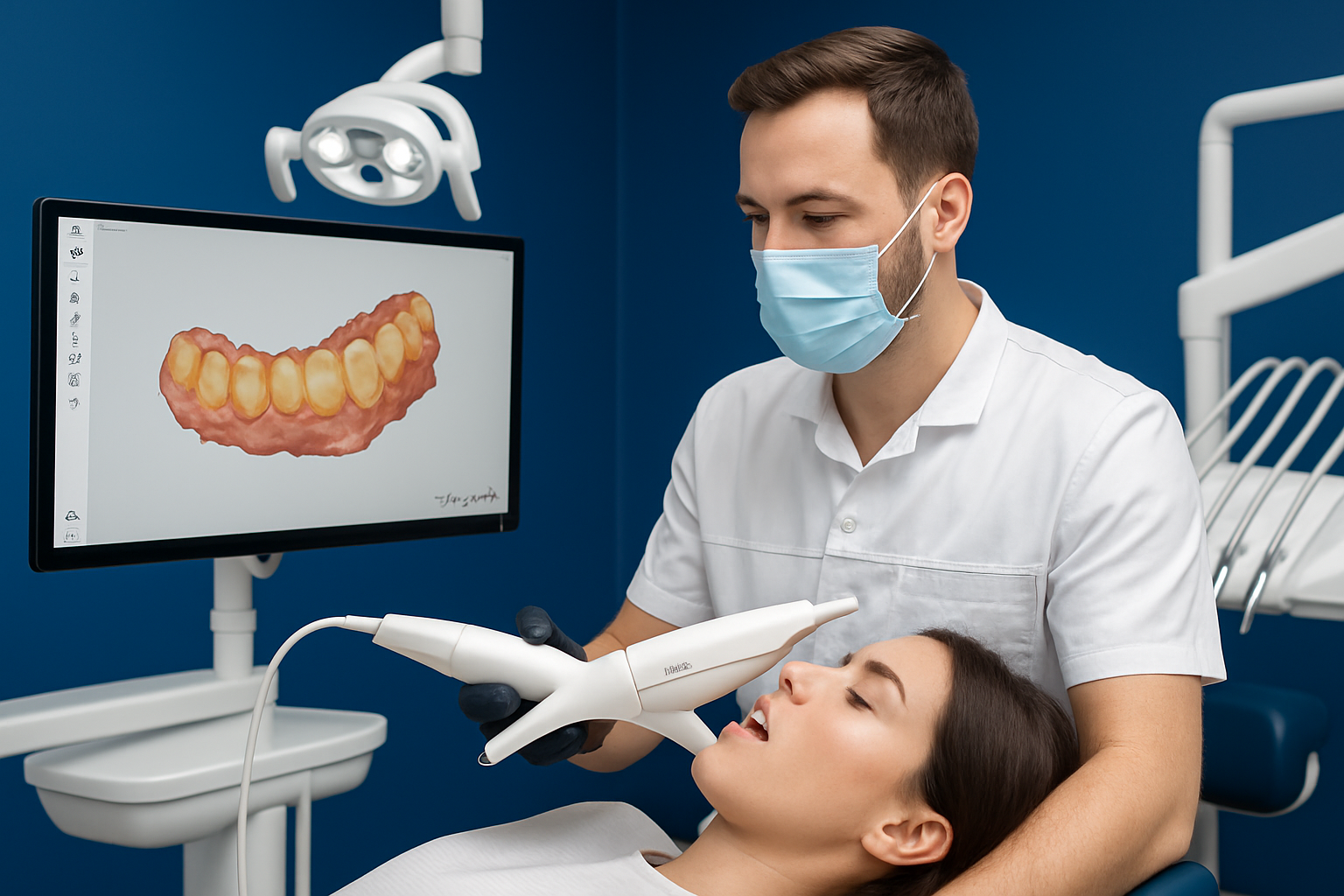
Accuracy and Speed: Clinical Impact
With the 3shape dental scanner, expect sub-micron accuracy that outperforms traditional impression materials. This technology captures intricate details, ensuring precise digital models for restorative, orthodontic, and implant cases.
Scan times are dramatically reduced. Most full-arch scans finish in under 60 seconds, streamlining appointments and minimizing patient discomfort. The result is better-fitting crowns, bridges, and aligners, with fewer remakes and last-minute adjustments.
Recent data shows clinics using the 3shape dental scanner report a noticeable drop in restoration remakes. Fast, accurate impressions translate to higher clinical confidence and improved patient outcomes. Dentists gain more control over treatment planning and can deliver results with greater predictability.
Patient Experience and Engagement
The 3shape dental scanner transforms the patient journey. Unlike older systems that rely on powder or messy materials, this scanner offers a powder-free, comfortable experience. Patients can relax as their teeth are scanned in seconds, reducing anxiety and chair time.
Real-time 3D visualization lets patients see their scans instantly. This boosts understanding and trust, making it easier to discuss treatment options. Digital smile design tools further enhance engagement, allowing patients to preview potential results before committing.
Practices using the 3shape dental scanner consistently report higher patient satisfaction scores. Shorter appointments and a high-tech touch leave a lasting impression, often leading to more referrals and positive reviews.
Workflow Integration and Open System Compatibility
Seamless workflow integration is a standout strength of the 3shape dental scanner. Its open architecture makes it compatible with leading CAD/CAM software, third-party mills, and 3D printers, supporting a plug-and-play approach.
Dentists can export scans in STL, PLY, or DCM formats, making collaboration with labs and specialists effortless. Cloud-based case management supports remote consultations and real-time updates, keeping the entire team in sync.
For example, transferring cases to lab partners is now as easy as a few clicks. Practices benefit from streamlined production, reduced turnaround times, and the flexibility to choose the best partners and technologies for each case.
AI and Software Advancements
AI-driven features set the 3shape dental scanner apart. Automated margin detection, caries identification, and shade matching are built in, reducing manual steps and potential errors. The software evolves continuously, introducing diagnostic tools and enhanced processing with every update.
Security and compliance are front and center, with robust data protection measures. Automated error correction ensures cleaner scans and more reliable outcomes.
For a deeper dive into how clinical AI tools are revolutionizing dental imaging, see Imaging and clinical AI tools.
ROI and Practice Growth Potential
Investing in a 3shape dental scanner is a strategic move for growth-minded practices. Material and impression costs decline significantly, while the ability to offer premium services—such as clear aligners and same-day restorations—increases case acceptance.
Most clinics report a return on investment within 12 to 18 months. Expanded digital capabilities attract new patients, retain existing ones, and allow for more efficient scheduling. The 3shape dental scanner helps practices scale, adapt, and thrive in a digital-first future.
Step-by-Step Guide: Implementing a 3Shape Scanner in Your Practice
Bringing a 3shape dental scanner into your practice is a strategic move that can revolutionize your workflow, patient care, and growth potential. Let’s break down the process into clear, actionable steps so you can implement this technology with total confidence.
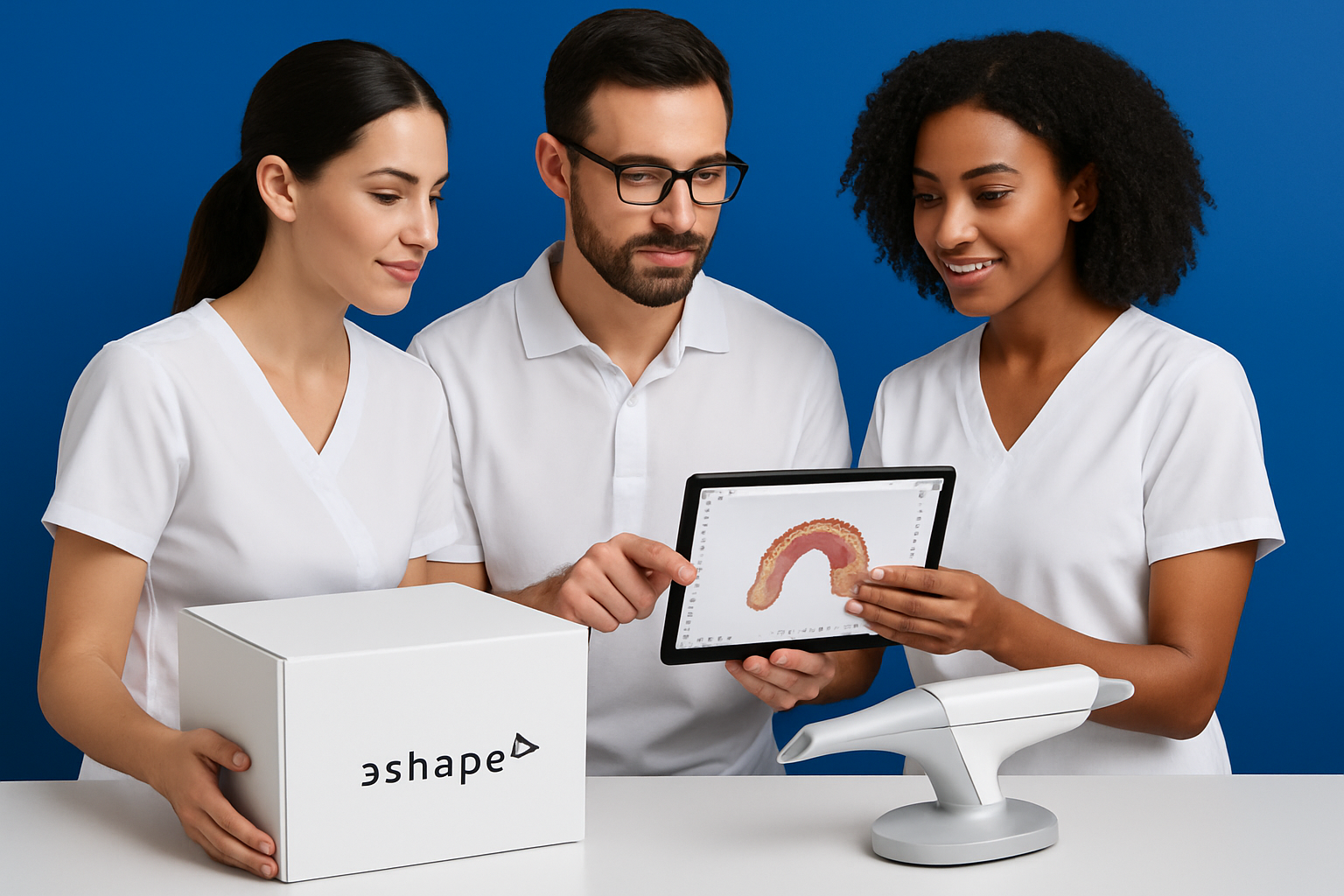
Step 1: Assessing Practice Needs and Readiness
Before investing in a 3shape dental scanner, take time to evaluate your unique needs. Start by considering your primary clinical focus:
- Are you performing mostly restorative, orthodontic, or implantology procedures?
- Do you anticipate expanding into new service areas?
- How will a 3shape dental scanner fit with your current patient volume and case types?
Next, analyze your existing workflow and digital infrastructure. Do you already use digital imaging or CAD/CAM systems? Assess your team’s comfort with new technology and identify training requirements.
Checklist for readiness:
- Review space and ergonomic needs for scanner placement
- Confirm hardware compatibility (PCs, tablets, network)
- Evaluate network speed and reliability for cloud features
- Identify staff members for digital champion roles
For clinics transitioning from analog impressions, consider how a 3shape dental scanner will streamline processes and reduce manual errors. By planning ahead, you set a strong foundation for success.
Step 2: Selecting the Right 3Shape Scanner Model
Choosing the ideal 3shape dental scanner involves comparing models and features that match your practice goals. The TRIOS 3, TRIOS 4, and TRIOS 5 each offer distinct advantages:
| Model | Key Feature | Best For |
|---|---|---|
| TRIOS 3 | Wired, reliable | All-around clinical use |
| TRIOS 4 | Wireless option | Portability, flexibility |
| TRIOS 5 | Ultra-lightweight | Fast scans, ortho cases |
Ask yourself:
- Do you need wireless mobility or is a wired model sufficient?
- How important is battery life for your workflow?
- Will you benefit from advanced features like shade measurement or caries detection?
Budget is also a key factor. Explore financing, leasing, or refurbished options to maximize ROI. Check warranty terms, ongoing support, and access to software updates.
Orthodontic practices often prefer the lightweight TRIOS 5, while labs might prioritize desktop scanners for model digitization. Match your selection to your daily needs and growth plans.
Step 3: Installation and Staff Training
Proper installation and staff onboarding are vital for a smooth transition to a 3shape dental scanner. Begin with professional setup and calibration to ensure optimal accuracy.
Next, roll out hands-on training modules for your entire team. Leverage resources like 3Shape Academy and e-learning platforms for flexible learning.
Training checklist:
- Schedule initial and follow-up training sessions
- Assign digital workflow roles to team members
- Develop digital impression protocols
- Practice scanning on models before patient use
A well-trained team builds confidence and consistency. For many practices, full adoption takes just a few weeks. Encourage open feedback and continuous learning to keep everyone engaged and proficient.
Step 4: Integrating with Existing Software and Lab Partners
Integration is where your 3shape dental scanner truly shines. Connect it to your practice management, imaging, and CAD/CAM software for seamless digital impressions and case submissions.
Streamline communication with labs by establishing digital protocols. Set up workflows for case approvals, real-time feedback, and secure file sharing. If you use Open Dental or similar platforms, you can follow guides like the Open Dental software integration to ensure smooth connectivity.
Troubleshooting tips:
- Test file exports (STL, PLY, DCM) with your lab partners
- Use cloud-based portals for remote collaboration
- Address integration issues promptly to avoid workflow bottlenecks
Effective integration improves turnaround times, reduces errors, and enhances collaboration with both in-house and external partners.
Step 5: Optimizing Workflow and Measuring Success
To maximize the impact of your 3shape dental scanner, track key metrics and continuously refine your workflow. Monitor scan times, remake rates, and patient feedback to identify areas for improvement.
Use data analytics to measure ROI and productivity. Many practices see increased case acceptance and reduced material costs within the first year. Regular software updates and ongoing training keep your team at the forefront of digital dentistry.
Leverage your success by:
- Showcasing digital capabilities in marketing
- Educating patients with digital visualizations
- Expanding into new services like clear aligners or same-day dentistry
By following these steps, your investment in a 3shape dental scanner will deliver measurable benefits for your practice, your patients, and your bottom line.
Comparing 3Shape Scanners to Other Leading Brands
Choosing the right intraoral scanner is a pivotal decision for any dental practice. The 3shape dental scanner has become a benchmark, but how does it stack up against other top brands in 2025? Let’s break down the features, user experiences, pricing, and practice suitability to help you make the most informed decision.
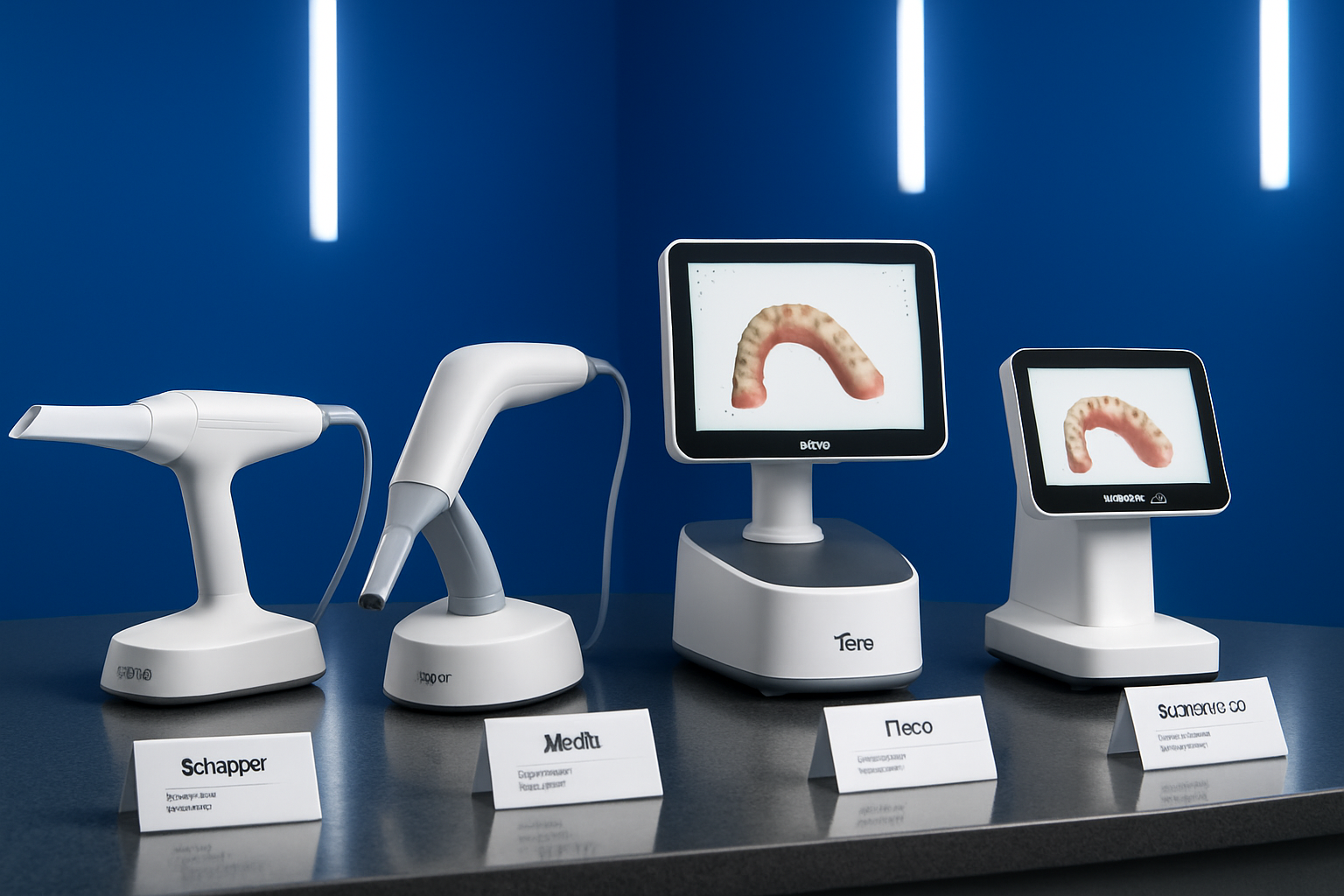
Side-by-Side Feature Comparison
When comparing scanners, practices often weigh scan speed, accuracy, software compatibility, and ecosystem flexibility. The 3shape dental scanner’s open architecture is a standout, allowing seamless integration with third-party CAD/CAM systems and labs.
Here’s a quick comparison:
| Feature | 3Shape TRIOS 5 | Medit i700 | iTero Element 5D | Shining 3D Aoralscan 3 |
|---|---|---|---|---|
| Scan Speed | <60 sec full arch | <70 sec full arch | <60 sec full arch | <70 sec full arch |
| Accuracy | Sub-micron | High | High | High |
| File Formats | STL, PLY, DCM | STL, PLY, OBJ | STL, proprietary | STL, PLY, OBJ |
| System | Open | Open | Closed/Open* | Open |
| Wireless Option | Yes | Yes | Yes | Yes |
| UI/UX | Intuitive, color | Modern, color | Intuitive, color | Simple, color |
| Subscription Model | Optional | No | Yes | No |
*Some iTero models allow limited STL export.
The 3shape dental scanner’s latest innovations, such as those found in the TRIOS 6 Intraoral Scanner Unveiled at IDS 2025, continue to push boundaries with AI-driven features and enhanced wireless performance. Practitioners appreciate the flexibility of an open system, especially when integrating with various digital dentistry tools.
User Feedback and Industry Ratings
What do users and experts say? Across global surveys, the 3shape dental scanner consistently earns high marks for ease of use, scan accuracy, and patient comfort. Dentists and lab technicians value the intuitive interface and robust cloud integration.
Industry awards frequently highlight 3Shape’s leadership in innovation and workflow efficiency. In independent reviews, satisfaction scores for the 3shape dental scanner often surpass those of closed-system competitors, especially regarding software updates and ecosystem flexibility.
Pricing, Warranty, and Support Considerations
Pricing for a 3shape dental scanner varies, with new models typically ranging from $1,000–$3,500+ on the secondary market, and higher for the latest releases. Practices can choose between new and refurbished units, balancing budget and technology needs.
Warranty terms are competitive, with upgrade paths and demo units available through many dealers. 3Shape’s responsive support and regular software updates add peace of mind. For a detailed breakdown of costs and options, check out the 3Shape software pricing guide to plan your investment wisely.
Suitability for Different Practice Types
The 3shape dental scanner is designed for versatility. Solo practitioners benefit from its intuitive workflow and minimal training curve. Group practices appreciate the scalability and multi-user support, while dental labs leverage the scanner’s precision for complex restorations.
For specialty applications like orthodontics, prosthodontics, and implantology, dedicated workflows and AI-driven features streamline case planning. Multi-location DSOs find the 3shape dental scanner’s cloud collaboration and open integration ideal for standardizing digital workflows across branches.
Ultimately, whether you’re a boutique clinic or a high-volume lab, the 3shape dental scanner adapts to your unique clinical needs, supporting both growth and innovation.
Future Trends: What to Expect from 3Shape and Dental Scanning in 2025
The next wave of innovation is about to reshape the 3shape dental scanner landscape. As we look to 2025, emerging technologies are set to redefine how dental teams deliver care, collaborate, and engage with patients. Let’s explore the future-defining trends every dental professional should watch.
AI and Automation in Digital Dentistry
AI is at the heart of the 3shape dental scanner evolution. Expect even smarter automation in 2025, with predictive diagnostics that help identify caries, cracks, and more before they become larger problems. Automated margin marking speeds up restorative workflows, while AI-powered treatment planning tools guide clinicians toward optimal outcomes.
Real-time error correction during scanning is becoming standard, reducing the need for retakes and improving accuracy. These innovations, as highlighted in Digital Dentistry Trends 2025: AI, Scanning, and Cloud Integration, are transforming clinical efficiency and diagnostic precision with every 3shape dental scanner update.
Enhanced Cloud Collaboration and Remote Workflows
The cloud is unlocking new ways to work with a 3shape dental scanner. Secure, cloud-based sharing makes it easy for multi-site practices and dental labs to access scans and collaborate in real time. Remote consultations and teledentistry are becoming integral, allowing clinicians to review cases and provide expert input from anywhere.
Streamlined lab communication and digital approvals help speed up turnaround times. Cloud integration ensures that every 3shape dental scanner user can connect seamlessly with partners, improving workflow flexibility and supporting modern, distributed care teams.
Sustainability and Eco-Friendly Scanning Solutions
Sustainability is a growing focus for the dental industry, and the 3shape dental scanner is leading the charge. By digitizing impressions, practices dramatically reduce physical material waste associated with traditional molds. Energy-efficient hardware and recyclable scanner components further shrink the environmental footprint.
Many clinics are now using their eco-friendly approach as a marketing advantage. For a closer look at how dental technology is driving green dentistry, see Top Dental Technologies to Watch for in 2025. The 3shape dental scanner is helping practices achieve their sustainability and operational goals with every scan.
Patient-Centric Innovations
Patient expectations are rising, and the 3shape dental scanner is meeting them head-on. Personalized smile design and simulation tools let patients see their potential results before treatment begins, increasing confidence and acceptance. Digital visualizations support clearer communication, helping patients understand their oral health and treatment options.
Clinics report higher satisfaction and more referrals as a result. By leveraging the 3shape dental scanner, teams can deliver a modern, interactive experience that puts patients at the center of care.
Regulatory and Data Security Developments
Data security is a top priority as digital workflows expand. The 3shape dental scanner is designed to meet evolving standards like HIPAA and GDPR, ensuring patient information is protected. Enhanced encryption and robust access controls are standard features, helping practices maintain compliance.
Looking ahead, anticipate even stronger regulations around digital health data. Practices using a 3shape dental scanner can feel confident they are prepared for the next wave of requirements, keeping patient trust and privacy at the forefront.
